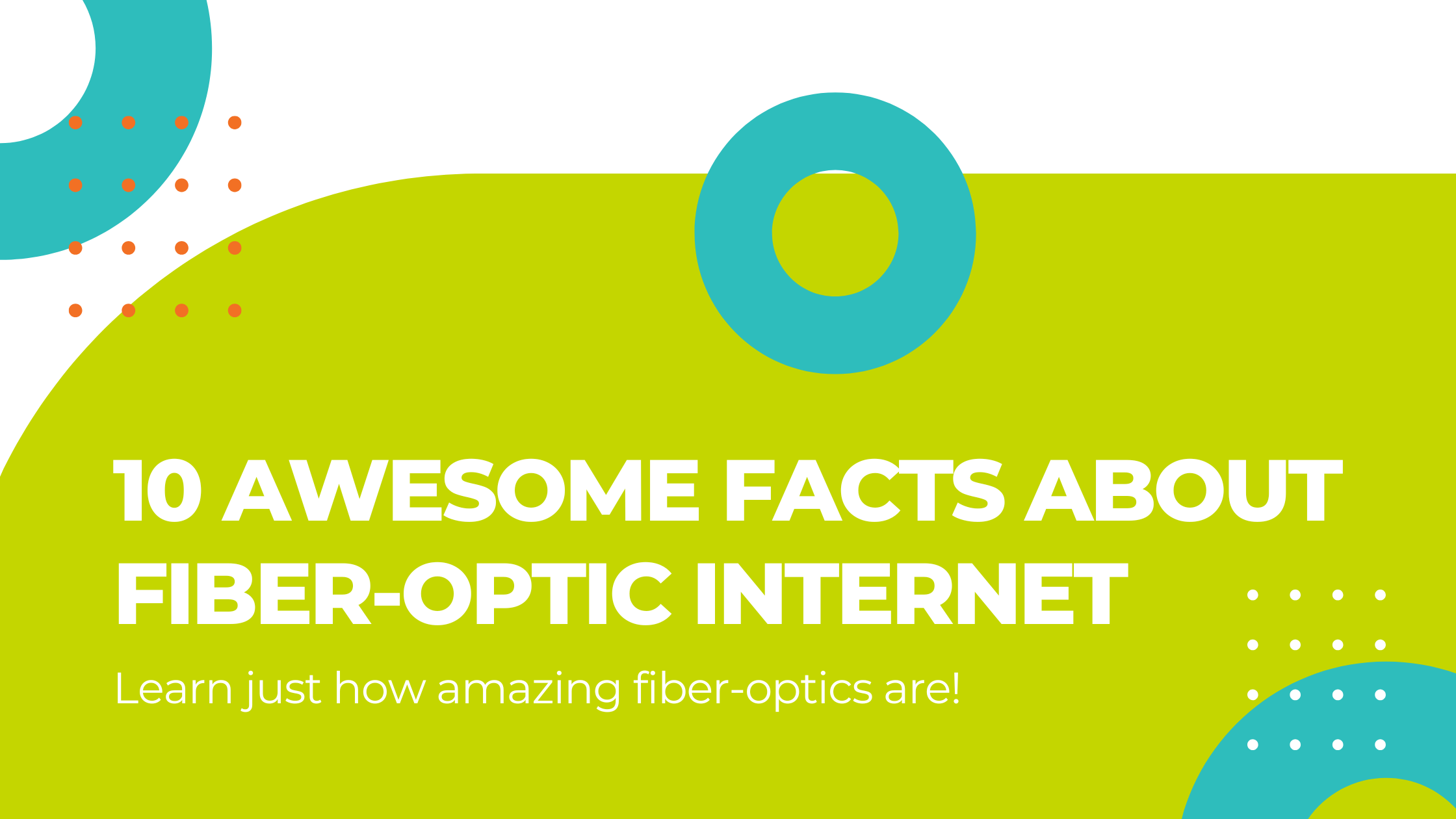10 Awesome Facts About Fiber-Optic Internet
Fiber-optic technology has really taken off in the last decade, and with the increased interest we keep finding out more interesting facts about what it can do! Join us as we share our top 10 fiber-optic facts that prove how incredible it is.
Fact 1- Small but Mighty
Fiber-optic cables are made from thin strings of glass and are generally about one-tenth the width of a human hair. You wouldn’t think that something so small could be strong, but fiber-optic cables have more than eight times the pulling tension of a traditional copper wire.
Fact 2 – All the Power, No electricity
One of the most defining features of fiber-optics is that they use light instead of electricity. This comes with a wide variety of benefits, most notably that they are non-conductive. Being nonconductive makes them less likely to generate heat and catch fire than your traditional copper wire.
Fact 3 – Sustainable Technology
Fiber-optic cables are made from glass or silica, which happens to be the second most abundant element on the planet. This element can be found abundantly in the Earth’s crust, which means it’s not likely that there will be a shortage of the materials needed to create fiber-optic cables anytime soon.
Fact 4 – Can Weather the Storm
Even though fiber-optic strands are small they are extremely durable. Since they are not made of metal and carry light instead of electricity, they are less likely to be affected by the weather and changing temperatures that would make copper wire more brittle and likely to break.
Fact 5 – Boost Your Home Value
A study done by FTTH Council showed that having a fiber-optic internet connection to your home can increase its value by up to 3.1%! With working from home becoming more commonplace, this isn’t too surprising.
Fact 6 – Safety
Did you know that fiber is one of the safest ways to transmit data? Since fiber-optic cables use pulses of light to transfer data they emit no electromagnetic energy making it harder for hackers to intercept and access the information. Another way fiber-optics is safer is that any attempt to tap into a fiber-optic connection will generally result in an interruption of the light signal leading to faster detection and resolution.
Fact 7 – Energy-Efficient
Fiber-optics is a very energy-efficient technology. The amount of energy required to utilize fiber-optic cables is less than traditional copper wire. Copper wire takes about 3.5 watts to send light 1km, while it only takes 1 watt for a fiber-optic cable to do the same task.
Fact 8 – Resilient
Fiber-optic cables are more resilient than copper wires. This is because traditional metal wires are susceptible to weather conditions and use electromagnetic currents that cause them to deteriorate quickly. On the other hand, fiber-optic cables are not as affected by these factors giving them a longer lifespan.
Fact 9 – Super Small
Though sizes can vary, standard fiber-optic strands are 0.125mm or .0005 inches in diameter!
Fact 10 – Fiber Has Layers
Like ogres, fiber-optic cables have layers that help them function correctly! Here’s how a standard fiber optic cable breaks down; at its center, you have your glass strands that carry light from one end to the other. Then around those strands, there is a protective coating that shields the fiber strands from any interference. The last layer is called the outer jacket, and it ensures that any light stays in the fiber strands while adding another level of protection.
We hope this showed you just how incredible fiber-optics can be! We can’t wait to see what other technological advances come as we learn even more about it. If this information has only piqued your interest in fiber-optic networks you can learn more about our network and the speeds we offer on our Residential Services page.
